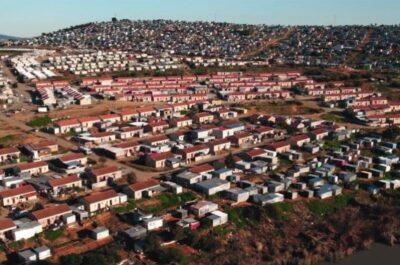
“The brick structures have a fibre drop and a network termination unit. The tin structures receive their Wi-Fi through a pole-mounted outdoor, fibre-connected, Wi-Fi access point,” Briggs explained.
While the network operator initially wanted to use Wi-Fi hotspots to supply multiple homes to reduce costs, the metal shacks severely attenuated Wi-Fi signals. To work around the issue, the company connected fibre directly to homes to avoid connectivity interruptions due to signal interference.
Another aspect Isizwe had to overcome was Eskom load-shedding, which prevented residents in the township from buying Internet access. To allow residents to buy Internet access whenever needed, Isizwe installed one uninterrupted power supply (UPS) at each home.
Well that’s not a bad cost because a month would cost about R150 for uncapped 100Mbps. Very usable and affordable. I see they use a VulaCoin wallet for top-ups, so it would be interesting to know if there are any implications around that. The stated revenue earned per day per home exceeds the income from the user, so I’m imagining there is some other generation of revenue through ads being inserted? I would also think at this cost that the 100Mbps is not a guaranteed speed, but rather one that is contended with quite a few other users (like ADSL was).
See https://mybroadband.co.za/news/fibre/489603-fibre-to-the-shack-uncapped-100mbps-for-r5-a-day.html
source https://gadgeteer.co.za/isizwes-fibre-to-the-shack-in-south-africa-uncapped-100mbps-for-r5-us0-27-a-day/
Comments